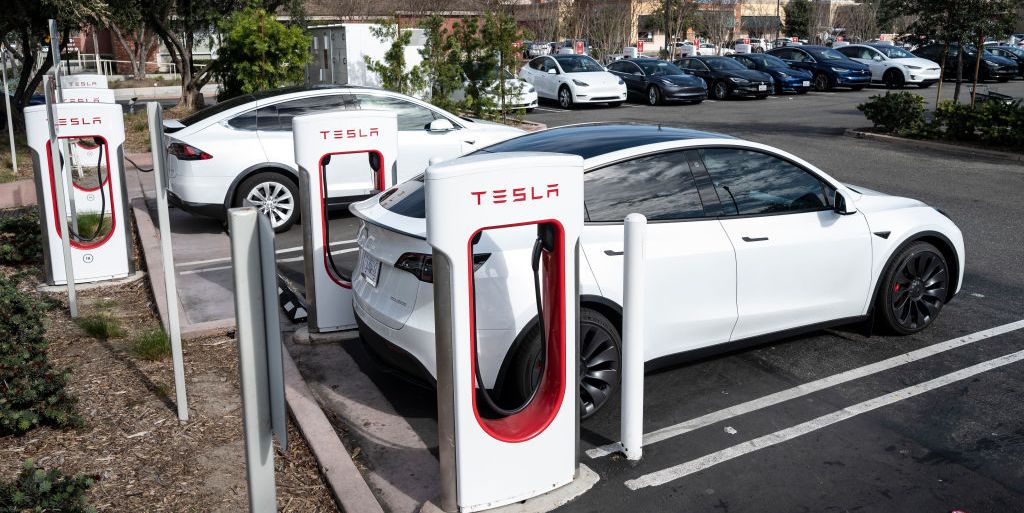Here’s How Oregon Will Phase Out Gas Cars, Trucks, and SUVs

Oregon formally adopts Clean Cars II, setting a target date of 2035 to phase out sales of new gas- and diesel-engine cars, light trucks, and SUVs, with interim targets until 2035.California and Washington have already cemented plans to phase out sales of new internal-combustion-engine cars, light trucks, and SUVs, with Washington being the earliest with a 2030 target year.Several other U.S. states have now adopted California’s Clean Cars II framework but face a number of challenges in expanding EV infrastructure.
Earlier this month the state of Oregon adopted rules that will make it the third West Coast state to require that all new cars, SUVs, and light trucks be zero-emissions by 2035, joining Washington and California. The Environmental Quality Commission, which is the administrative rulemaking board for the Oregon Department of Environmental Quality, became yet another state to adopt the Clean Cars II rules, also recently enacted by the state of New York.
Other Moves around the U.S.
Like a number of other states, Oregon is now taking steps to solidify these plans via administrative rulemaking, rather than legislation or a governor’s executive order. By comparison, the state of Washington has adopted the most ambitious agenda of the three West Coast states, setting the goal at the year 2030 and doing so earlier this year via legislation signed into law Governor Jay Inslee.
“With today’s adoption of the ACC II Rule, all those living in Oregon will benefit from the cleaner air and improved public health outcomes achieved by reducing pollution from transportation,” Leah Feldon, the Department of Environmental Quality’s interim director, said earlier this month. “This is especially true for low-income and underrepresented communities across the state who live closest to roadways and have been most often impacted by poor air quality.”
Like a number of other states, Oregon faces several hurdles in advancing toward the 2035 goal, ranging from current EV infrastructure in cities and outside cities, to power grid adequacy. But it’s also setting interim targets: The first compliance step for automakers is just around the corner in 2026, with Oregon (and other Clean Cars II states) requiring that 35% of an automaker’s offerings be battery-electric, PHEV, or hydrogen fuel cell by January 1 of that year.
States that plan to phase out gas and diesel cars and trucks still face a number of challenges, including sparse EV infrastructure.
FREDERIC J. BROWN|Getty Images
This means automakers will have just over three years to reach that target for sales in Oregon—a taller order for some if not for others. The admission of PHEVs into this mix, of course, gives some automakers a lifeline.
“Oregon continues to see the consequences of greenhouse gas emissions across the state—with extreme heat, more severe wildfires, winter storms and flooding and prolonged drought—and I am committed to addressing the climate crisis with urgency,” said Oregon Governor Kate Brown.
The state will take a number of other interim steps to achieve the 2035 goal, including investments in EV infrastructure and grid reliability. Oregon will invest some $100 million to build more EV charging stations along the state’s major highways, as well as expand their presence in rural areas of the state, which is perhaps where the greatest challenge lies for Oregon and for other states.
If there is a major loophole to be seen at the moment, it is the fact that under these rules sales of plug-in hybrids will be permitted past the 2035 date if they offer a range of 50 miles or more. This doesn’t make a vehicle a zero-emission vehicle, as many critics note, so gas stations won’t disappear overnight and automakers will be able to produce fairly large and heavy PHEVs well past 2035.
EVs, on the other hand, will have to offer a range of 150 miles under Oregon rules in addition to DC fast-charging capability, which by 2035 (if not today) seems quite easily accomplished. We don’t expect to see too many new EVs even past 2025 that won’t be able to do at least 150 miles on a single charge.
This content is imported from OpenWeb. You may be able to find the same content in another format, or you may be able to find more information, at their web site.



